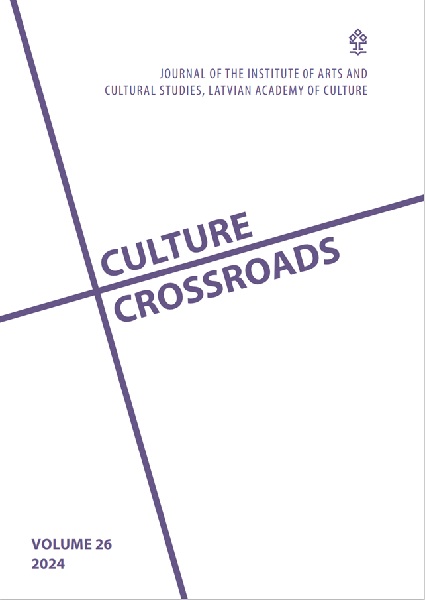GASTRONOMIC CODE OF LATGALE JEWS IN THE 1970s–1990s
DOI:
https://doi.org/10.55877/cc.vol26.484Keywords:
Gastronomic code, Jews, memory, foodAbstract
The aim of the article is to demonstrate the specifics of the gastronomic code as a phenomenon of cultural model and as a particular element of the formation of Jewish identity during the Soviet period using the example of the situation of Jews in Latgale. The study is part of a research project focusing on the Jewish text in Latgale, a region in south-eastern Latvia, during the 1970s–1990s. Within the project, a field study – semi-structured interviews – was carried out. The informants interviewed were representatives of Jewish ethnicity, born in the 1960s–1970s, who currently reside in Latvia and Israel.
During the research, the key components of the gastronomic code were identified: remarkable dishes, awareness of the ethnic tradition, understanding of religion, model of knowledge transmission from generation to generation.
Considering the specifics of the field study material, the following conclusion has been drawn. The gastronomic code of the Jewish community in Latgale during the Soviet period reflects a blend of Ashkenazi Jewish traditions and the norms of Soviet household practices.
Downloads
References
Braun, V., Clarke, V. (2006). Using thematic analysis in psychology. Qualitative Research in Psychology, No. 3 (2), pp. 77–101.
Burgess, R. G. (ed). (1982). Field Research: A Sourcebook and Field Manual. London: Routledge.
Certeau, M., and Giard, L. (2008). The Nourishing arts. In: C. Counihan, P. van Esterik, (eds). Food and Culture. New York, London: Routledge, pp. 67–77.
Danesi, M. (2006). Food: Semiotics. In: K. Brown (ed.). Encyclopaedia of Language and Linguistics. 2nd ed., Oxford: Elsevier, pp. 533–535.
Eco, U. (1978). A Theory of Semiotics. Bloomington and London: Indiana University Press.
Ermolaev, V. (2022). Gastronomy as an Object of Cultural Analysis. Vestnik Kemerovskogo gosudarstvennogo universiteta kul’tury i iskusstv, No. 59, pp. 32–42.
Kaspina, M. (2024). The Rybnitser Rebbe and Underground Jewish Religious Life. In: B. Martin, N. Beliakova (eds). Religious Life in the Late Soviet Union. New York, London: Routledge Pub., pp. 50–64.
Lotman, Y. (1990). Universe of the Mind: A Semiotic Theory of Culture. Indiana University Press.
Murray, M. (2003). Narrative psychology and narrative analysis. In: P. M. Camic, J. E. Rhodes, and L. Yardley (eds). Qualitative Research in Psychology: Expanding Perspectives in Methodology and Design. Washington: APA Books, pp. 95–113.
Parasecoli, F. (2011). Savoring semiotics: food in intercultural communication. Social Semiotics, No. 21 (5), pp. 645–663.
Vasiljeva, E. (2018). Jewish Text in Latvian Literature. Daugavpils: Saule.
Vedenyapina, D. (2016). “I don’t know... My mom used to always do it so I do it too”: a few notes on the food practices of Latgalian Jews. In: Neighborhood Lost:Jews in the Cultural Memory of Contemporary Latgale, Vol. 2. Moscow: Sefer, pp. 49–57.
Vedenyapina, D. (2018). Pishcha evreev Vostochnoj Evropy. In: T. Emelyanenko, E. Nosenko-Stein (eds). Evrei. Moscow: Nauka, pp. 260–272.
Downloads
Published
Issue
Section
License
Copyright (c) 2025 Culture Crossroads

This work is licensed under a Creative Commons Attribution 4.0 International License.


